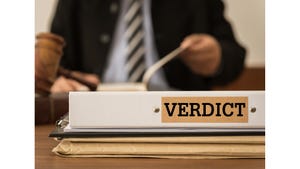How to Choose a Tubular Chain Conveyor
March 23, 2020

Chemical processors are faced with their own set of unique challenges that continue to change as the market evolves. Of late, the coronavirus has shrouded the $900 billion equipment finance sector with a cloud of uncertainty. Overall, confidence in the equipment finance market in March is 46, a decrease from the February index of 58.7.1
While the industry continues to fluctuate, process safety is, and will continue to remain, a top priority for bulk chemical manufacturers. Despite only comprising one aspect of a synchronized operation, conveying systems lay at the heart of any chemical processing line. Conveyor selection is always defined by the larger project it is meant to serve, as there are a broad range of performance criteria that must be met. Safety first, but energy efficiency, hygiene, overall equipment effectiveness, and longevity are all important factors to consider.
As more advanced equipment enters the market to help meet modern standards, here is a quick checklist to help bulk chemical processors select a conveying system that best suits their product, application requirements, and budget.
1. Protection Against Product Degradation
Product degradation can have a huge impact on your bottom line if you are not careful. While some materials are highly combustible and require special handling such as anti-static and no metal-to-metal contact components, others demand the material to remain within the pipe due to potential hazardous health impacts.
Regardless of the material, it is paramount to provide a high level of protection from sparks, material dusting, contamination, high and low levels of humidity, flow surges, temperature changes, and other factors that could alter the quality of the product. The chemical and physical properties of your product, such as density, particle size, abrasiveness, moisture content, corrosiveness, flowability, temperature, etc., could determine what conveying system will be best for you.
2. Cable, Pneumatic, or Chain?
The conveying industry offers a variety of products and components that differ in price, efficiency, construction, and productivity. Depending on the particular demands of your bulk processing line, there are several solutions that can solve your chemical handling problem.
Cable conveyors are an affordable solution, but require high maintenance, can experience unsanitary cable fraying or breakage, and offer limited strength in the cable. Pneumatic conveyors are also affordable, although expensive to maintain since they suffer from plugging or bottlenecking and are not particularly gentle when transporting chemicals. While upfront costs are slightly higher, tubular chain conveyors are often more durable and gentler. Maintenance is low and more reliable for batch and continuous product conveying.
3. Choose a System That Guarantees Longevity
It can be easy to ignore the small details when trying to complete a large project. When comparing two similar systems, one manufacturer might offer a low price for what seems to be the same machine. But take a closer look, and you will notice differences in the components and materials used. Keep in mind that some conveying systems will perform well at first, but with a little bit of time and some wear and tear, they will cause damage to your product and negatively affect your production rates.
Tubular chain conveyors pay dividends in the long run. Built with quality, chemical-grade materials and FDA-approved components, these systems are made to last long-term. Overall, tubular chain conveyors with a chain-tensioning mechanism ensure minimal wear to the chain, discs, and housing. Depending on your application, you might need discs made with ultrahigh molecular-weight polyethylene (UHMW-PE), polyurethane, or cast iron. If you’re handling abrasive materials, request for the conveyor pipes to be fitted with abrasion-resistant lining such as basalt. When properly equipped, a conveyor can handle highly abrasive or hot materials with minimal damage to the machine or product.
4. Safety First
Statistics show that there were 1.9 injuries and illnesses per 100 workers in the chemical manufacturing industry in 2018. A total of 18 fatalities were recorded in the same year, and while this is down from 28 in 2015, safety remains a top priority for processors2 and should be addressed as part of a quality management plan.
Look for a conveying system that offers advanced safety features that help prevent accidents. By enclosing materials, tubular chain conveyors reliably contain dusty and hazardous chemicals, safeguarding workers at the same time as protecting the conveyed material against external influences. The enclosed design is also resistant against internal pressure buildup caused by explosions and helps to contain propagating flame, making it suitable for handling potentially explosive chemicals. When transporting such materials, you may need a conveyor that can be purged with inert gas, such as nitrogen.
5. Energy Efficiency is Key
For well over a decade, the chemical processing industry has shifted its focus to find creative ways to reduce energy usage and reshape product life cycles. Not only is the issue regulated extensively through federal policies, but in some chemical processes, certain conveyor designs can take up to 50% of your facility’s power. As such, maintaining an energy efficient production is integral to maintaining a competitive edge.
In terms of power consumption, tubular chain conveyors are the most efficient option on the market. Electrical power needed to fuel the machine is reduced as it typically uses just one low horsepower motor.
6. Avoid Contamination with a Clean-in-Place (CIP) System
Although a CIP system can improve efficiency and avoid product contamination, the reality is that not everybody needs one. However, in the chemical sector, preserving the integrity of the material being conveyed is critical. Some chemicals will react negatively should they inadvertently come into contact with other materials.
Because a conveyor handles materials that aren’t always contained, it must comply with the highest hygiene standards to prevent contamination. A CIP system that is isolated from the upstream or downstream machinery and interlocked for operation is advisable. As well as ensuring the conveyor is sanitized to industry standards, it avoids the dismantling and reassembly of equipment and is capable of cleaning conveying systems from dry to dry in just 60 minutes.
7. Finding the Right Supplier
While some suppliers will take a look at the overall picture and consider the long-term cost of investing in a particular piece of equipment, others are only concerned about the initial cost. Both approaches are acceptable and understandable, but ignoring the seemingly small details could increase your overall investment considerably. Therefore, as discussed, we suggest looking at both the short- and long-term goals to determine which conveying system is best suited for your application.
There are numerous factors to take into consideration, such as the space where the conveyor will be installed and compatibility with upstream and downstream equipment. Take advantage of the supplier’s expertise by providing them with detailed information about your material, including its particle size distribution, bulk density, flowability, temperature, abrasiveness, explosibility, and other characteristics. The manufacturer will also need to know what conveying capacity you require, the available space and location of existing equipment and other fixtures in the area where the conveyor will be installed, and any special requirements the conveyor must meet, such as sanitary standards.
After testing, it is time to customize the conveyor for your production line. Backed by customer service and support, the result should be a tubular chain conveyor that reliably and efficiently transfers your material for years to come.
Navam Jagan is president, Luxme International Ltd (Montreal, Canada). For more information, call 450-619-1999 or visit www.luxme.com.
1 www.chemicalprocessing.com/industrynews/2020/coronavirus-uncertainty-hits-equipment-finance-market/
2 www.bls.gov/iag/tgs/iag325.htm
Here are more articles that may interest you:
Addressing Drag Conveyor Chain Inefficiencies, Lifespan
What is Mechanical Conveying?
Choosing the Right Conveyor
3 Essential Factors to Consider for Your Next Food Grade Conveyor
You May Also Like

